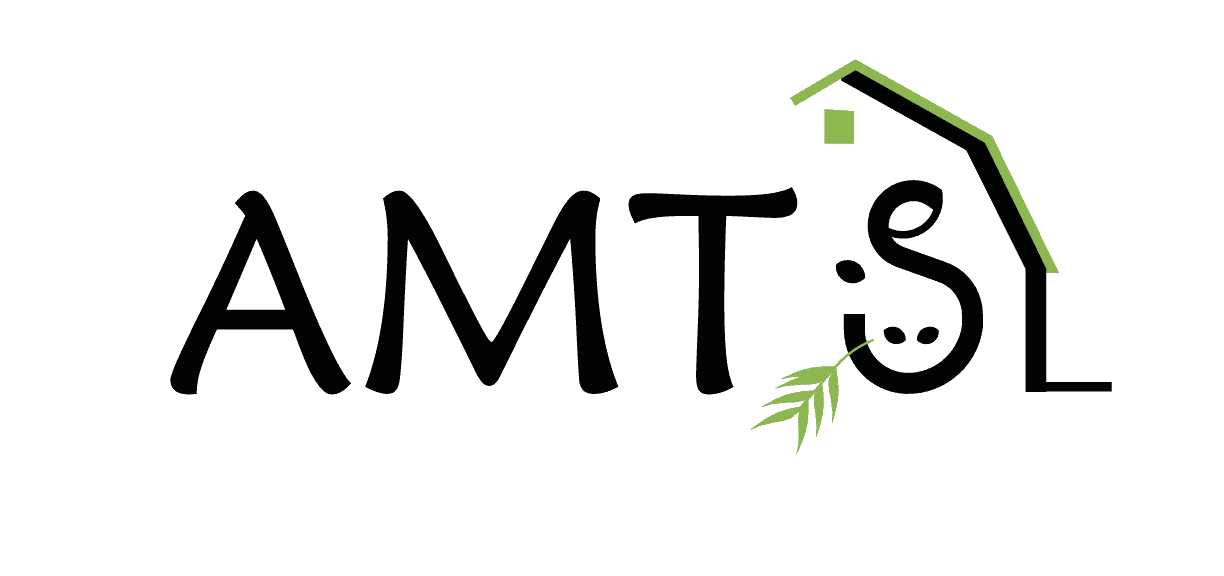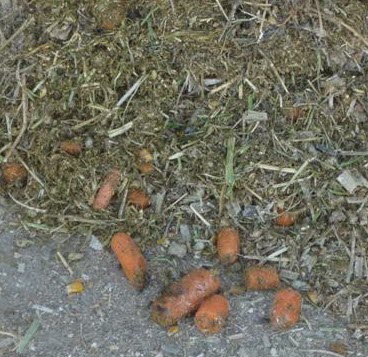
Animal agriculture(especially beef and dairy production) is targeted for its contribution to climate change. The scope and significance of this connection is often based on incomplete or inaccurate information. As we wrote in last week’s blog, when considered strictly in terms of greenhouse gas emissions, cattle contribute between 4 and 9 percent of total gasses. However, this number does not reflect the contribution grazing animals make to the carbon cycle and the extent to which grazing converts otherwise non-productive for food crops land utilization to high quality protein. Even less examined is the fact that our intensively managed cattle on dairies and feedlots are uniquely effective at converting the by-products of the food, beverage, and even textile industry into meat and milk. Our post this week focuses on how cattle “upcycle” byproducts into quality protein.
What IS Upcycling?
Feeding by-products is a cost effective and environmentally sustainable way to feed both beef and dairy cattle. When agricultural byproducts like almond hulls, tomato pulp, cotton seed, citrus pulp, canola meal, distillers grains, cannery waste, vegetable trimmings and even candy and bakery waste make up a significant part of most diets, allowing cattle to upcycle byproducts into quality protein. These products would normally go to the landfill or be left to decompose on the farm and are, instead, upcycled into the highly valuable human foods. An article by Dr Sara Place, of the National Cattlemen’s Beef Association, emphasized the need for the Ag community to discuss the role ruminants have in what she called a circular bio-economy. She referenced a United Nations Food and Agriculture Organization (FAO) study that indicates that 86% of what livestock eat is human inedible and that globally livestock eat over 1.9 billion metric tons of leftovers from human food, fiber, and biofuel production. The numbers from the FAO study are global, US beef producers, with greater percentages of feed coming from human inedible products, compete even less for feeds that would be eaten by humans than these number indicate.
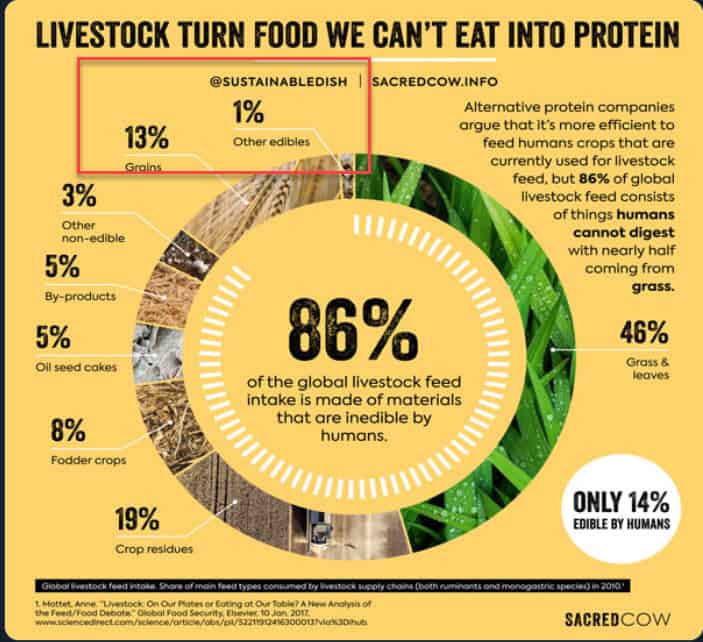
A July 24, 2020 story on the Dairigold website Georgie Smith states that US dairy cows upcycle up to 306 million pounds of food waste every day. 41 different byproducts are listed in a report from the University of Wisconsin-Madison as common ingredients in the diets of midwestern cows. The below image, taken from a presentation by Van Amburgh, Higgs, Chase, Czymmek, and Ketterings that would normally go into landfills.
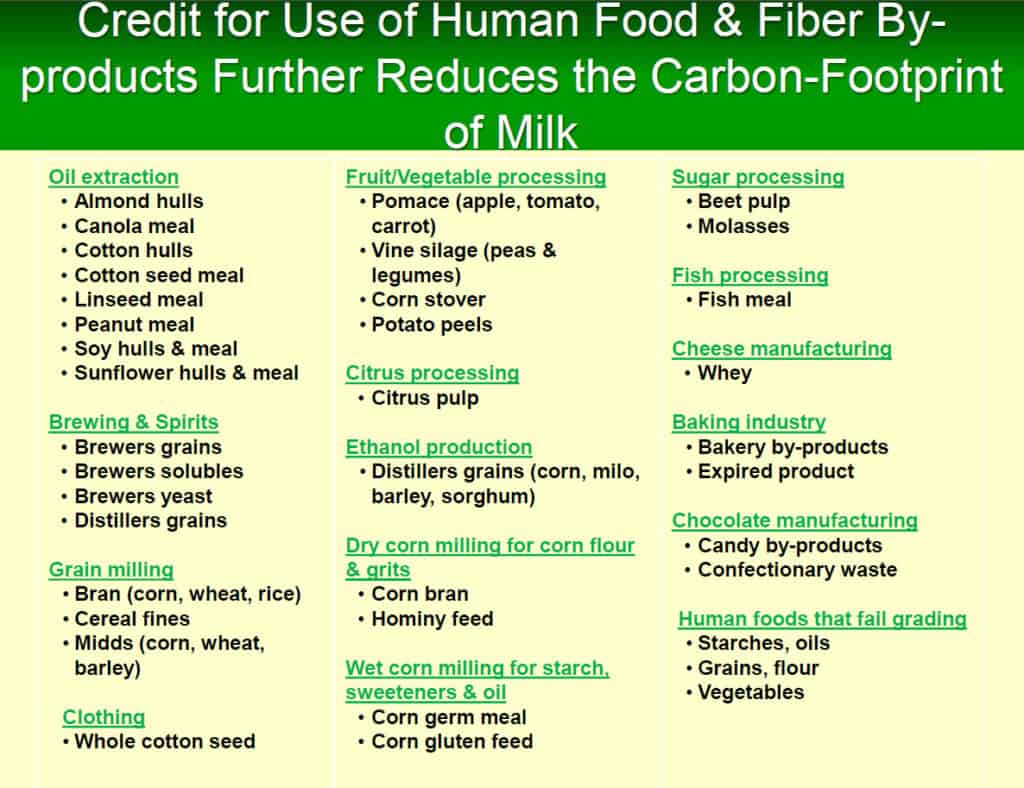
Improved Human Nutrition
A study from the Swedish University of Agricultural Sciences examined the efficiency and value of including animal protein for human consumption from a purely nutritional standpoint and concluded the utilization of human-inedible feeds justifies their contribution to food production.
Many consumers are unaware of the vital role ruminants play in managing waste in the food stream while providing nutrient-rich, affordable protein.Without continuing to increase animal protein production, there is a projected disparity between future population needs and supply (Pascin, 2016). This paper focuses primarily on dairy in California, notes that dairy has the lowest carbon footprint of all animal-sources. In terms of sustainability, dairy, through grazing non-arable land and using feeds that are not suitable for human consumption, epitomizes the Food and Agriculture Organization of the United Nations (FAO) definition of a sustainable food system. FAO defines a sustainable system as one that delivers food and nutrition security for all while reducing environmental impacts and keep food production economically and socially viable. A 2016 article on California Dairy Sustainability, points out that approximately 82% of California cow feed is unsuitable for human consumption.
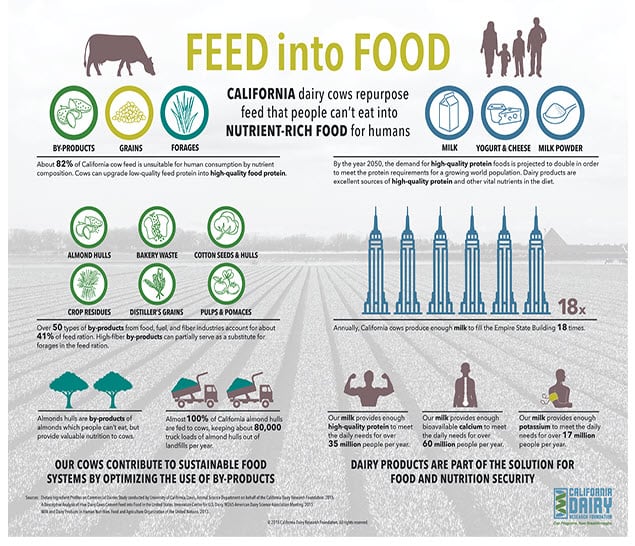
Upcycling keeps waste out of Landfills
In 2016 it was estimated that almond-hull usage by California dairy cows was approximately 2 million tons per year. This was almost 100 percent of the almond hull produced by California almond growers. All of this production was kept out of the landfills. Russomanno, Van Amburgh, and Higgs examined benefits that byproduct use by the dairy industry confers by upcycling products that would go to the landfills or be burned if not used as cattle feed. Based on their findings, in using byproducts as diet components, the amount of CO2 emitted is 5-fold less than if those same feeds were burned. Their conclusion is that the dairy industry is indispensable to the environment and should be credited for managing the waste products from the manufacture of food for direct human consumption. The EPA places animal feed near the top in the food waste hierarchy for sustainable management of food as shown in the graphic below.
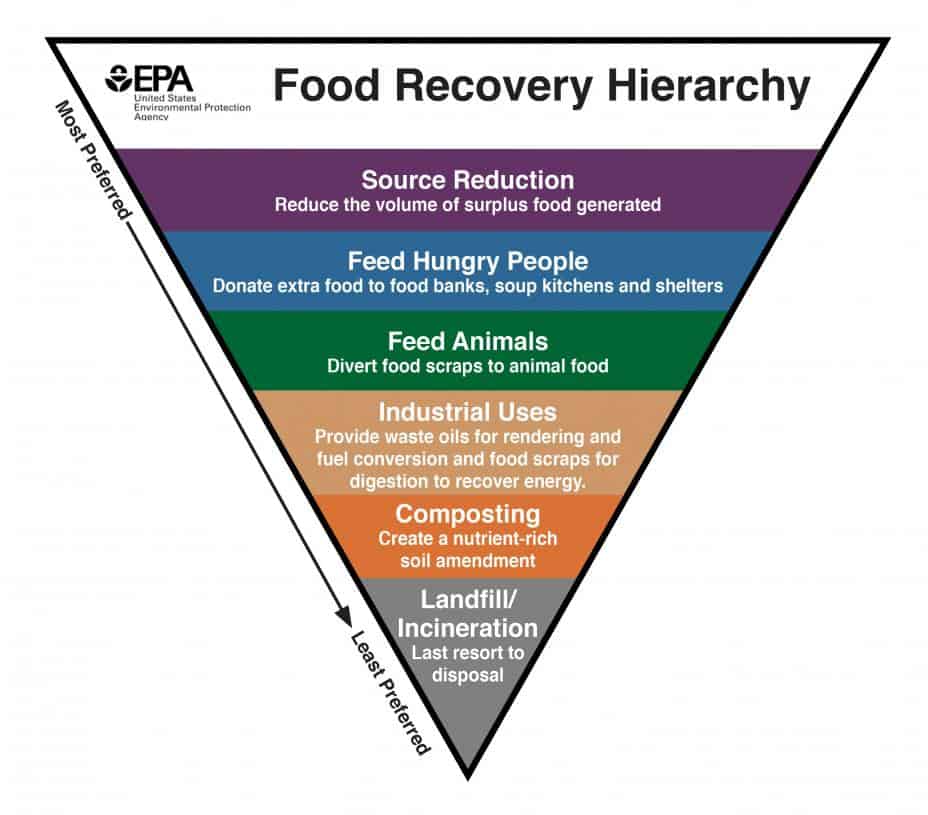
In an update from this paper, Dr Mike Van Amburgh, Cornell University, spoke to the Northeast Agribusiness and Feed Alliance publication about the unrecognized role the use of byproducts plays in reducing the carbon footprint of milk.
“Cows eat a lot of plant byproducts. Canola meal, soybeans, and at least 30% of the corn used is corn rejected for human consumption, and that corn is a byproduct as well. When you look at soybean byproducts, it’s five times less CO2 when fed to a cow. When you look at almonds, there were 2.2 million tons of hulls produced in 2018. Cattle consumed 70% of those hulls. So if you like your almond beverage, thank a cow for making it affordable and possible. That part of the food chain isn’t well described, and often gets ignored.”
The list of feeds that dairy and beef cattle consume and convert into quality protein is long and the feeds are very familiar to most nutritionists. Being aware of the opportunities to upcycle food waste into quality protein by running byproducts through cattle will lessen the carbon footprint, be better for our world, reduce the pressure on animal agriculture and may be less expensive.
Missed Message
Our problem continues to be the perception that dairy and beef production is unkind to the environment. Consumers and legislators are not aware of the essential role cattle play in upcycling waste and providing quality protein. The perception is that removing animal products from our plates would be an attainable and desirable goal that would improve the environment, our health, be affordable, and would sustain a suitable nutritional standard for the ever-growing world population. These assumptions are not backed by research. Additionally, this premise is usually put forward by people and groups that are not concerned with the cost and difficulty of stitching together a diet that economically meets their nutrient needs without incorporating dairy or meat.

As I mentioned last week, we not only need to be advocates but we also need to be educators. Please look into some of the links in the above article. Pay attention and notice what is being proposed in legislation. Recently, California Assembly introduced AB-2959, a bill that would authorize local authorities to dictate the disposal of food waste. This legislation would take from farmers the valuable service of cattle upcycling byproducts into quality protien. Dr Frank Mitloehner (he should be your hero) has been vocal in his opposition to this legislation.
What can we do?
Animal Agriculture must attention and improve efficiencies through precision diets and utilization of byproducts, we are to blame. Last week in a recent interview on the Gist, Jesse Eisenberg, casually mentioned that in 2032 all the meat will be lab grown. That comment was just tossed out—no questions, no debate. The assumption is, without science based evidence, that, in a not too distant future, the country will easily shift to lab grown meat because consumers think it is the “greener” thing to do. Let’s take a cue from Dr Jude Capper, livestock sustainability consultant; we can see the hypocrisy offered in a response from Oatly, a Swedish Oat-juice manufacturer–we should call companies out and tell our story.
You might enjoy this @robdvet – included it in my slides over the past three years or so after @oatly was asked that exact question during #Februdairy. https://t.co/mgoL40Zy2I pic.twitter.com/8rJ2J6pZTe
— Dr Jude Capper 🥛🐄🧀 (@Bovidiva) August 12, 2020
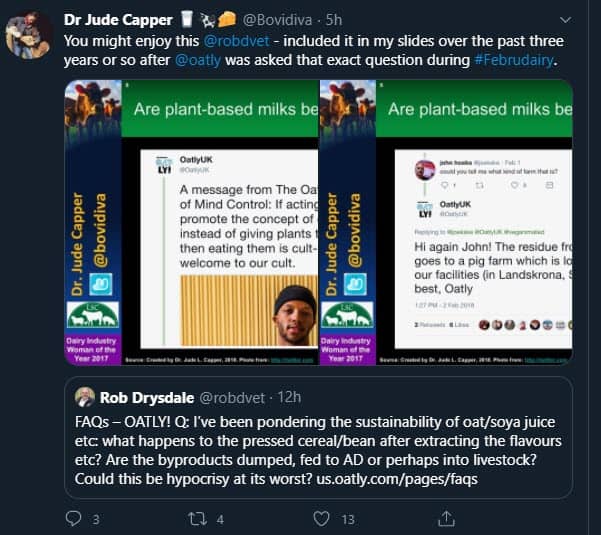
Producers and all of us in agriculture, need to speak up and reach out—we need to court influencers. We need to talk about farms like Threemile Canyon Farms in Eastern Oregon, places like Noblehurst Farms in Western New York, working to become a zero-waste operation, and—locally, EZ Acres, winners of a 2018 Outstanding Diary Farm Sustainability Award. Perhaps not so coincidentally, EZ Acres has been fed by Tom Tylutki, using first CNCPS then AMTS.Farm.Cattle, for 20 years. Here at AMTS our commitment to sustainable feeding solutions runs deep. We have built in the program resources that will help. AMTS.Farm already tracks nutrient and emissions in reports and outputs. Explore using byproduct feeds to replace some of the feeds that would normally be human feeds; the Ration Shot feature and Feed Comparison Tool make this easy. Review some of the webinars we have had in the past on feeding byproducts. Mike DeGroot, a leading California nutritionist was one of our very first speakers in The Nutritionist. We did a series this spring on Canola. Dr Michel Wattiaux of the University of Wisconsin-Madison, our November 2019 speaker, does a lot of work in the way cattle upcycle byproducts into quality protein. Most importantly, do something and talk to people outside your silo—your farming buddies at the coffee shop already know this stuff!
